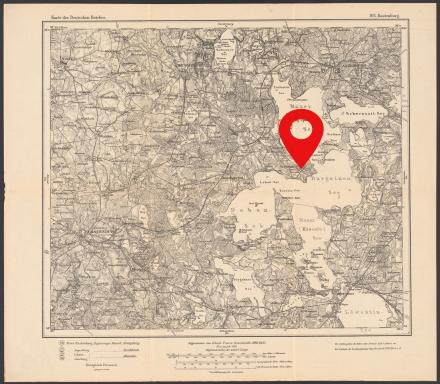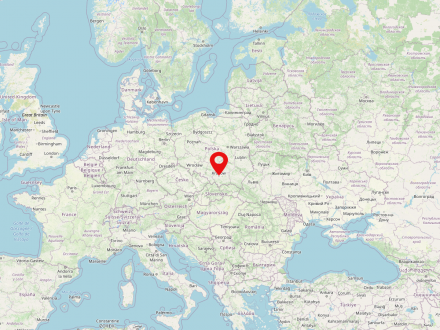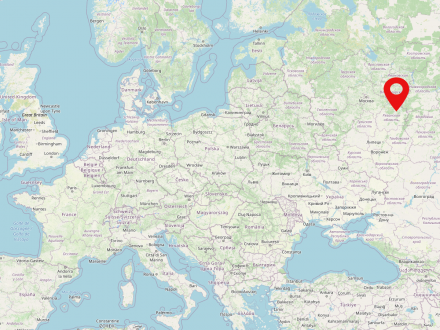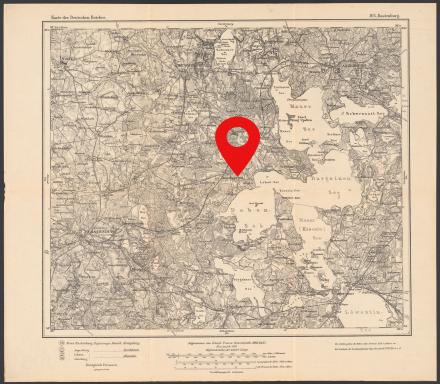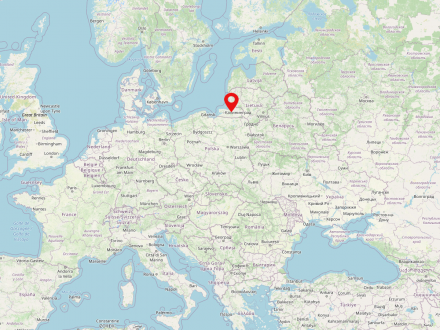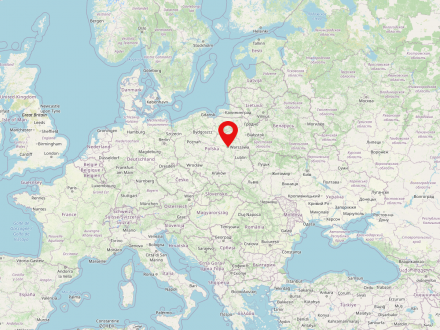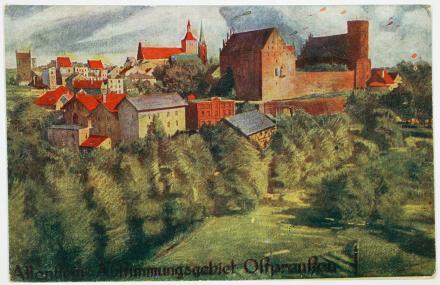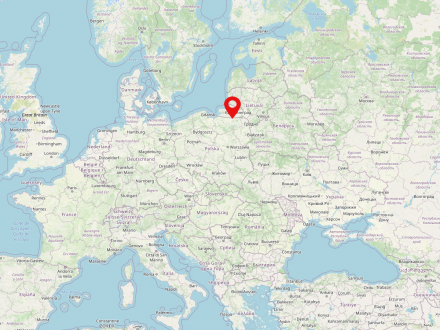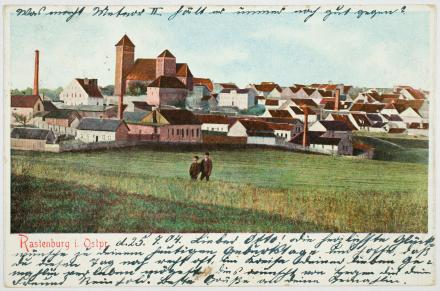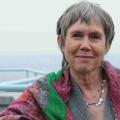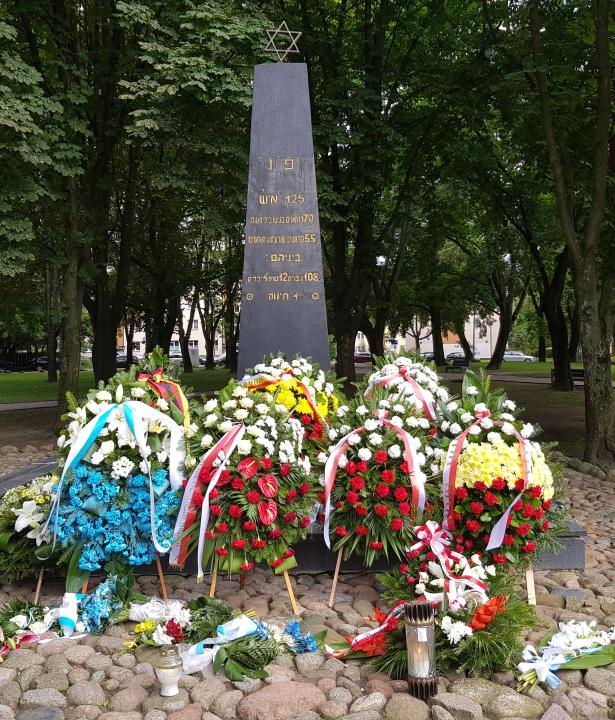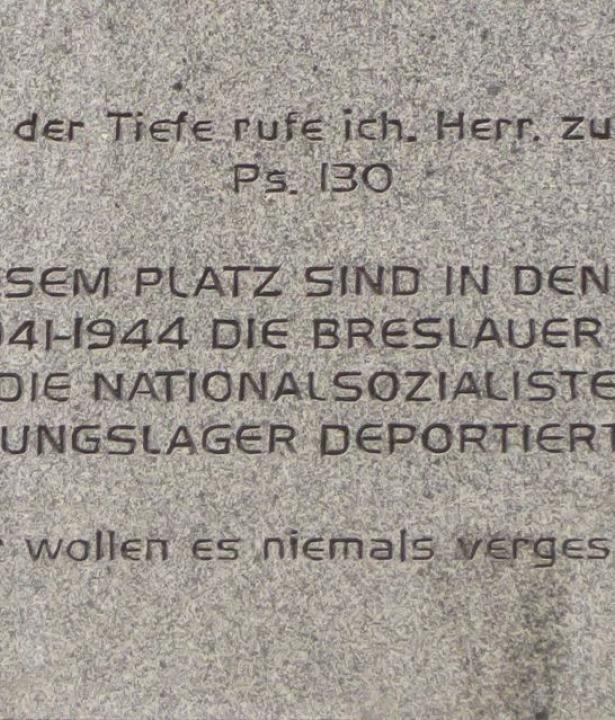The village of Sztynort is located in the north of the Masurian Lake District on the Jez Peninsula between Jezioro Mamry, Jezioro Dargin and Jezioro Dobskie. Until 1928 the village was called Groß Steinort, then Steinort.
Her son has just added a large living room on the side of the house facing the garden. With the window open, she can hear the good-humored tourists, families and groups, ambling towards the harbor. "Or to the castle. It’s lively up there in the summer." She is a keen and very lively storyteller.
The Pałac used to give her the creeps – it was haunted, and the adults claimed that Nazis carrying guns could appear around every corner. The east wing was home to Maria's kindergarten in the 1950s. Other parts of the building housed the offices of the PGR, the Państwowe gospodarstwo rolne (Agricultural Producers Cooperative/ LPG), and a number of families lived in the complex too. The Pałac was the center of Sztynort life, quotidian and at the same time full of secrets.


Outer Subcarpathia is the name given to the area on the outer side of the Carpathian Arc. The Polish voivodeship Podkarpackie takes its name from this.
Maria's mother never got over the trauma of April 1947, when her parents' house was destroyed, and the family was violently forced into a cattle wagon. Destination: Masuria. Maria Oryńczak, as she was called as a girl, longed for the forests and mountains of her old homeland all her life.




Krakow is the second largest city in Poland and is located in the Lesser Poland Voivodeship in the south of the country. The city on the Vistula River is home to approximately 775,000 people. The city is well known for the Main Market Square with the Cloth Halls and the Wawel castle, which form part of Krakow's Old Town, a UNESO World Heritage Site since 1978. Krakow is home to the oldest university in Poland, the Jagiellonian University.
Despite all the hardships, Maria and her younger sister Stefania had a sheltered childhood. They got along well with the other girls and boys from the neighborhood.
The game "Poland declares war on..." was especially popular. Each child chose a country, and whoever won was allowed to take a piece away from those who were defeated. In many places throughout traumatized Europe at that time, children were playing games like this one.


The Soviet Union (SU or USSR, Russian: Союз Советских Социалистических Республик, СССР) was a state in Eastern Europe, Central and Northern Asia existing from 1922 to 1991. The USSR was inhabited by about 290 million people and formed the largest territorial state in the world, with about 22.5 million square km. The Soviet Union was a socialist soviet republic with a one-party system.
The young Maria observed that her mother wore her headscarf differently from Lithuanian women. And the old Masurian woman, whom everyone addressed as "Oma" (grandma), crossed her apron strings at her back. This Frau Kielbasa hardly spoke Polish, and Frau Bartnik, the widow of the last count's coachman, also had a hard time with it. Maria noticed a boy named Stefan Tymiec "because he was especially polite."


Though Greek Catholic herself, she chose for her daughters to grow up Roman Catholic. After 1945, the Roman Catholic Church had quickly and powerfully taken over most of the Protestant churches in Masuria and left its mark on the bleak landscape with wayside crosses and Marian altars. Maria and Stefania celebrated their first Holy Communion in
Radzieje, founded in 1417 as "Rosengarten" (“Rose Garden”), is a parish village in the Polish voivodeship Warmia-Masuria. Radzieje had 510 inhabitants in 2006.
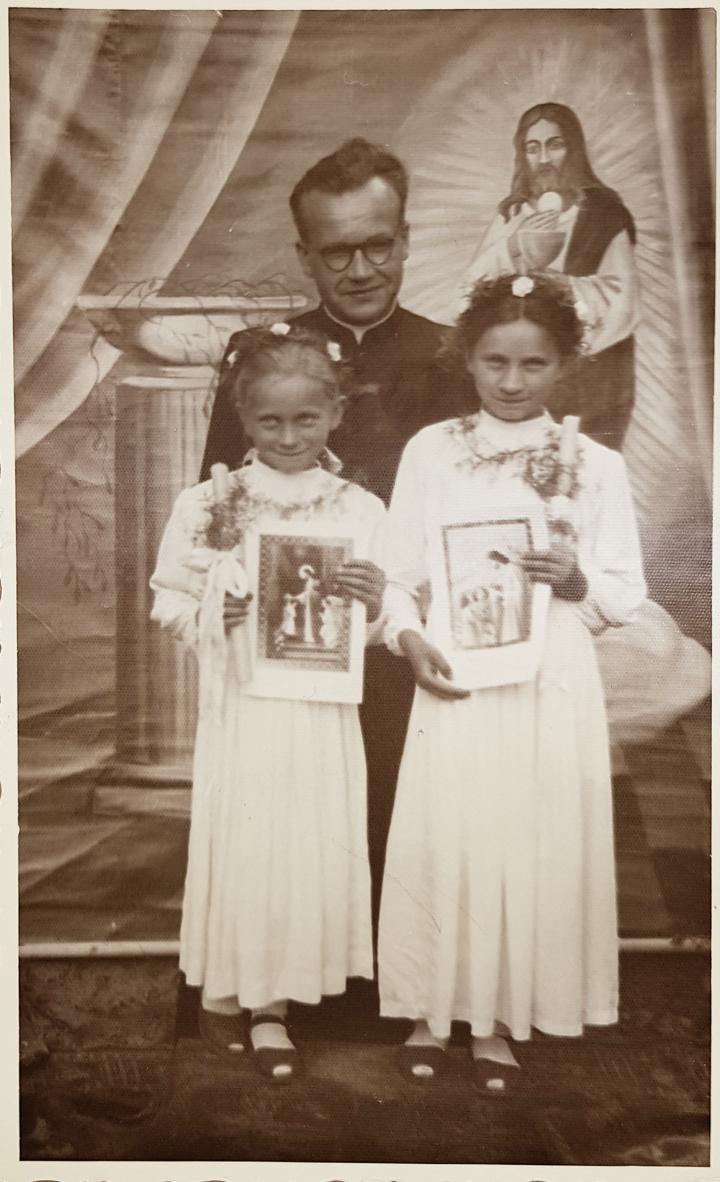


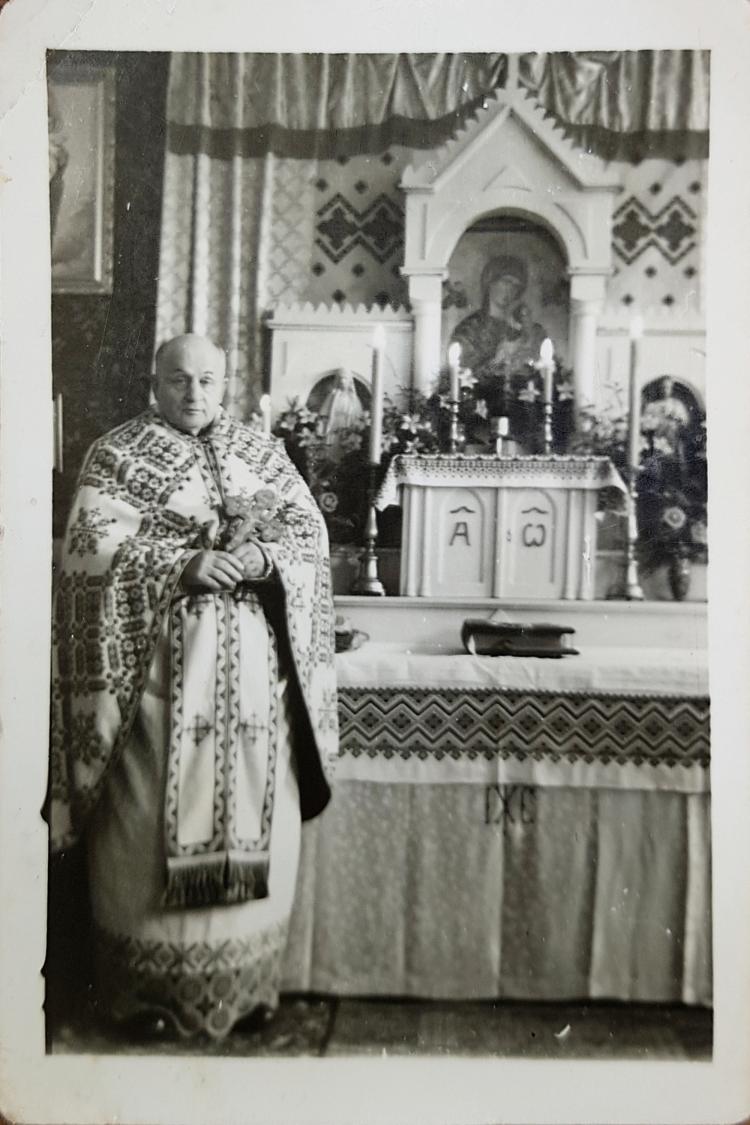
Kaliningrad Oblast (rus. Калининградская область) is positioned between Poland and Lithuania on the Baltic Sea. The oblast is the westernmost part of Russia and is populated by about 1 million people. The capital of the oblast is Kaliningrad (German: Königsberg).
Only the Masurians could, like the family of the polite boy Stefan Tymiec, whose mother was German. Almost all of them gradually applied for permission to leave for the West. Until the longed-for permission was granted, they mostly kept to themselves. Their silent exodus continued until the 1970s.

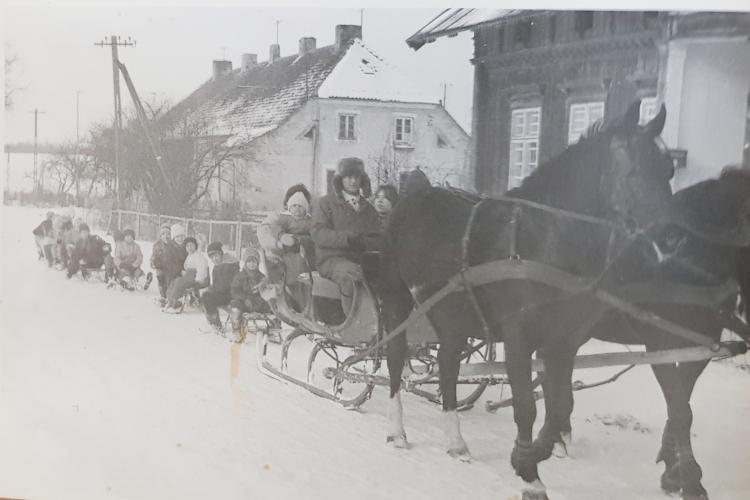
Warsaw is the capital of Poland and also the largest city in the country (population in 2022: 1,861,975). It is located in the Mazovian Voivodeship on Poland's longest river, the Vistula. Warsaw first became the capital of the Polish-Lithuanian noble republic at the end of the 16th century, replacing Krakow, which had previously been the Polish capital. During the partitions of Poland-Lithuania, Warsaw was occupied several times and finally became part of the Prussian province of South Prussia for eleven years. From 1807 to 1815 the city was the capital of the Duchy of Warsaw, a short-lived Napoleonic satellite state; in the annexation of the Kingdom of Poland under Russian suzerainty (the so-called Congress Poland). It was not until the establishment of the Second Polish Republic after the end of World War I that Warsaw was again the capital of an independent Polish state.
At the beginning of World War II, Warsaw was conquered and occupied by the Wehrmacht only after intense fighting and a siege lasting several weeks. Even then, a five-digit number of inhabitants were killed and parts of the city, known not least for its numerous baroque palaces and parks, were already severely damaged. In the course of the subsequent oppression, persecution and murder of the Polish and Jewish population, by far the largest Jewish ghetto under German occupation was established in the form of the Warsaw Ghetto, which served as a collection camp for several hundred thousand people from the city, the surrounding area and even occupied foreign countries, and was also the starting point for deportation to labor and extermination camps.
As a result of the Warsaw Ghetto Uprising from April 18, 1943 and its suppression in early May 1943, the ghetto area was systematically destroyed and its last inhabitants deported and murdered. This was followed in the summer of 1944 by the Warsaw Uprising against the German occupation, which lasted two months and resulted in the deaths of almost two hundred thousand Poles, and after its suppression the rest of Warsaw was also systematically destroyed by German units.
In the post-war period, many historic buildings and downtown areas, including the Warsaw Royal Castle and the Old Town, were rebuilt - a process that continues to this day.


The city of Olsztyn (population 2022: 168,212) was founded in 1353 as Allensteyn on the Łyna river. Olsztyn is the largest city in Warmia and the capital of the Warmian–Masurian Voivodeship. The city is member of the European Route of Brick Gothic, especially because of its Old Town market sqare and the Castle of Warmian Cathedral Chapter.
The picture shows a city view of Olsztyn /Allenstein on a postcard from before 1945.
Węgorzewo is a city in northeastern Poland in Warmińsko-Mazurskie Voivodeship. It is inhabit by about 11,000 people and is located not far from the border of Poland with Russia.
Later she managed the Szytnort kindergarten, did the accounting for the PGR, sometimes banking in Wegorzewo – whatever was convenient and worked in with her private life. Her sick mother needed her. And Piotr, her son, who was born in 1980. He was the fulfillment of her most ardent wish. She did not need a husband; she was a proud single mother – quite unusual at that time.


In particular, she would never forget the summer of 1977, when she was the secretary of the water sports center. Countess Gottliebe von Lehndorff paid a visit with her daughter Gabriele. Apparently, they wanted to spend the night in the castle, "We had hotel rooms here," but the director refused. Mrs. Zarębska recalls the countess crying. In retrospect, she blamed herself for not offering the distinguished guests a bed herself.


Poland is a state in Central Eastern Europe and is home to approximately 38 million people. The country is the sixth largest member state of the European Union. The capital and biggest city of Poland is Warsaw. Poland is made up of 16 voivodships. The largest river in the country is the Vistula (Polish: Wisła).




And the Pałac stood empty. For the second time since 1945, Lehndorff Palace stood deserted, exposed to looting and vandalism. "One night, the green stove in the east wing was stolen," recalls Maria Zarębska. No one looked after the rose beds and thuja hedges anymore, and the park became wild and overgrown. What was to become of it? The castle became visibly dilapidated – a symbolic image of the worries and fears of the village, but also an empty canvas onto which they could project their hopes for the future.
"Maybe the two of them will come back to Sztynort?"
Anyway, this summer, her son and daughter-in-law have come to visit her and are helping with the preserving.






